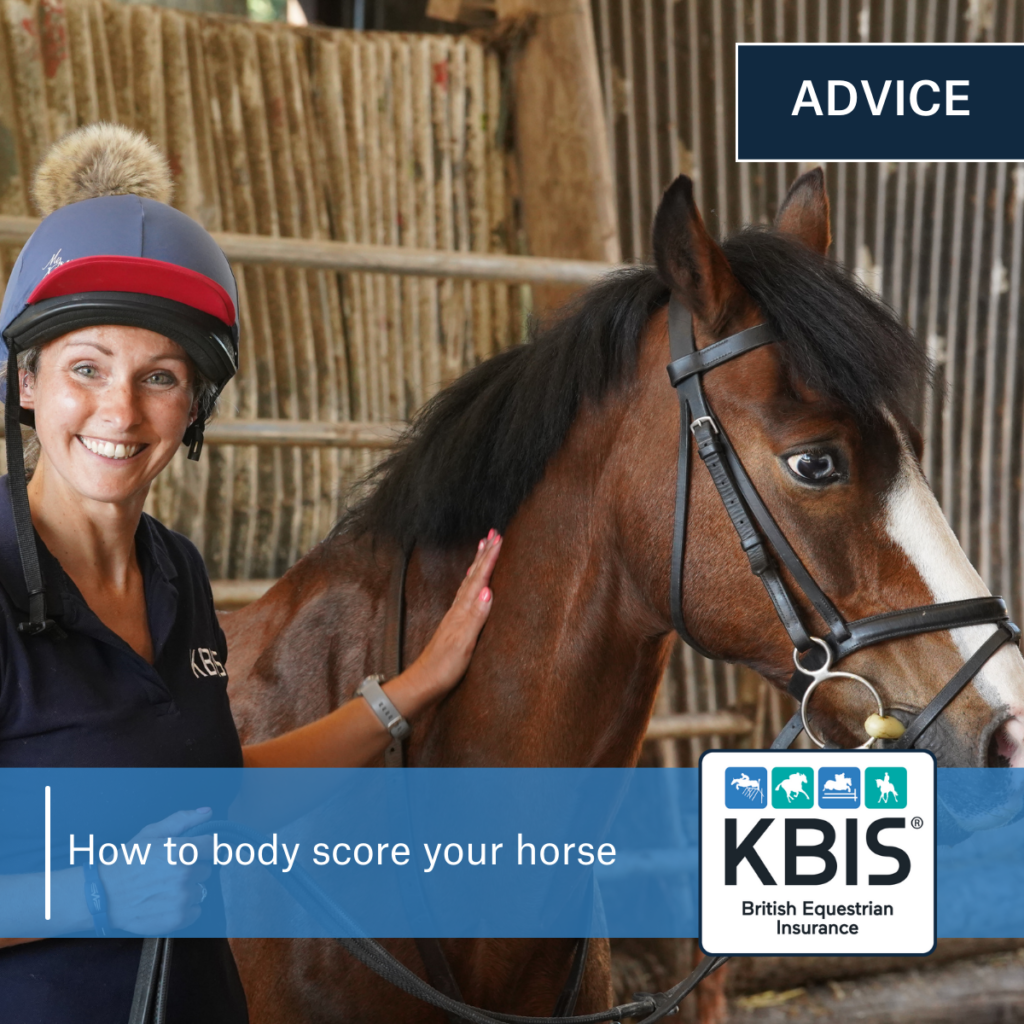Body scoring your horse is a great way to assess their weight objectively. It involves observing the overall fat covering in three separate areas: the neck, body, and hindquarters. Looking at weight and condition in this way is much more useful than weight taping alone as horses don’t carry fat evenly over their body and may get build-ups in different areas.
How do I body score my horse?
There are three areas you need to visually inspect and feel to determine your horse’s body condition score:
1. Neck and shoulders
Looking at your horse’s neck, can you see the shape of the muscles there? Have a feel along the crest and take note of whether it feels thickened or if there is hard fat present. Can it be wobbled from side to side? You should be able to feel the tubular nuchal ligament that’s near the top of the mane, along the length of the neck.
Take your hand and run it down the neck and onto the shoulder, does it stop when you meet the shoulder blade? Can you clearly see the shoulder? Fat can build up both in front and behind the shoulder blade which will make your hand move smoothly over it.
2. Middle
Run your hand over your horse’s ribs, can you feel them with a slight pressure? Or do you have to press firmly? If you have to really push for them or can’t feel them at all, this indicates a large amount of fat covering them. Take your hand and run it over their back, can you feel the backbone and is there a visible curve present? With overweight horses, fat can build up and be higher than the spine which will create a gutter.
3. Hindquarters
Next up you should have a feel over their hip bones, pelvis, and tail head. These should all be easily felt and seen with a thin layer of fat present. If they appear very prominent, the horse is underweight. Taking a look at your horse from behind, the quarters should be slightly rounded. If they are apple-shaped with a gutter, your horse is carrying too much fat here. In contrast, if they drop away at an angle, this indicates not enough fat coverage.
Horse body condition score chart
Following the advice above to inspect your horse, get a pen and paper at the ready and score each area using the chart below:
0 – Emaciated
- Skin is tight over bones with no fatty tissue felt
- Individual bones are clearly seen
- Marked ewe-neck
- Extremely prominent backbone and pelvis
- Very sunken rump
- Big gap between the thighs
- Deep cavity under the tail
1 – Very thin
- Shape of bones visible with little fatty tissue
- Narrow ewe-neck
- Visible ribs
- Prominent backbone, croup, and tail head
- Cavity under tail
- Sunken rump
- Gap between thighs
2 – Very lean
- Thin layer of fat under the skin
- Narrow neck with very defined muscles
- Backbone covered but protruding
- Withers, shoulders and neck accentuated
- Ribs slightly visible
- Hip bones can be seen but appear rounded
- Rump sloping from backbone to hips, may be rounded if very fit
3 – Healthy weight
- Thin layer of fat under the skin
- Less defined muscles on the neck
- Shoulders and neck appear to blend smoothly into the body
- Flat back or forms a slight ridge
- Ribs can’t be seen, but are easily felt
- Rump starts to appear rounded
- Hip bones are just visible
4 – Fat
- Muscles are hard to determine
- Spongy fat developing on the crest
- Fat present behind shoulders
- Hard to feel the ribs and pelvis
- Well-rounded rump which looks apple-shaped from behind
- Gutter along back
5 – Obese
- Blocky and bloated in appearance
- Muscles not visible
- Pronounced crest with hard fat
- Pads of fat present
- Unable to feel ribs
- Deep gutter along back and rump
- Lumps of fat around the tail head
- Bulging apple-shaped rump
- Inner thighs pressing together
In an ideal world, all horses should be around a score of 2.5 -3. If your horse is at a 4 body condition score or higher, it is time to take immediate action as they are at a high risk of laminitis. Horses that have had laminitis in the past should never be above a body score of 3, whereas chronic laminitis shouldn’t ever get above a 2.5.
It is a good idea to use body condition scoring in conjunction with weight taping, doing both around every two weeks to closely monitor weight gain or loss. Be aware that weigh tapes are not the most accurate and can vary depending on which one you use, so ensure you use the same one throughout your readings. For a more accurate understanding of your horse’s weight, weighbridges are best.
If you are worried about your horse’s weight, contact your vet right away. They will be able to work with you to create an action plan to help your horse meet their goal weight in a healthy and controlled manner.
Looking for more advice on caring for your horse? Learn all about strip grazing next and why it is a great tool for weight management.


